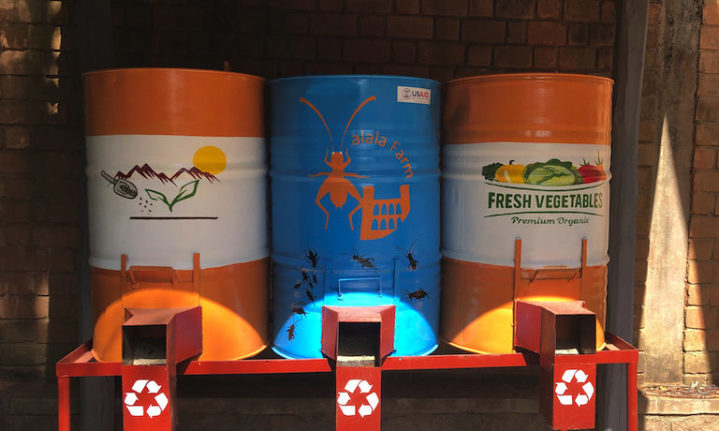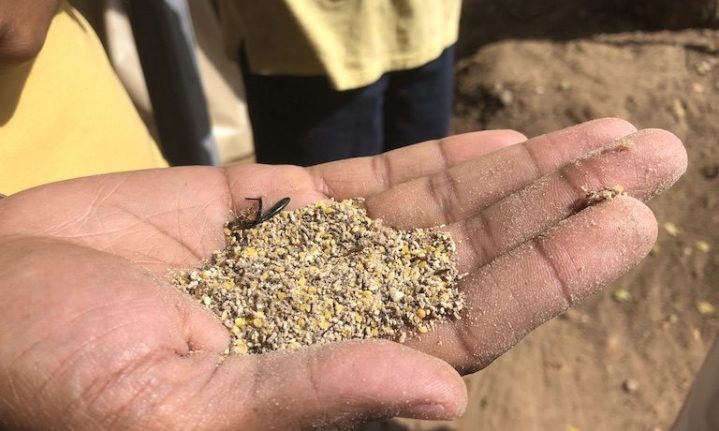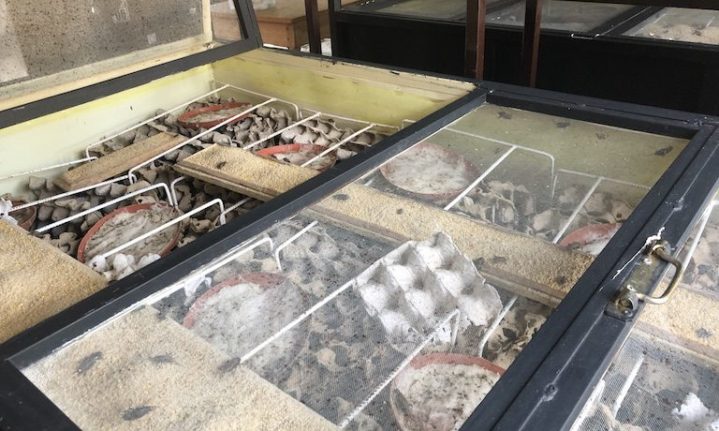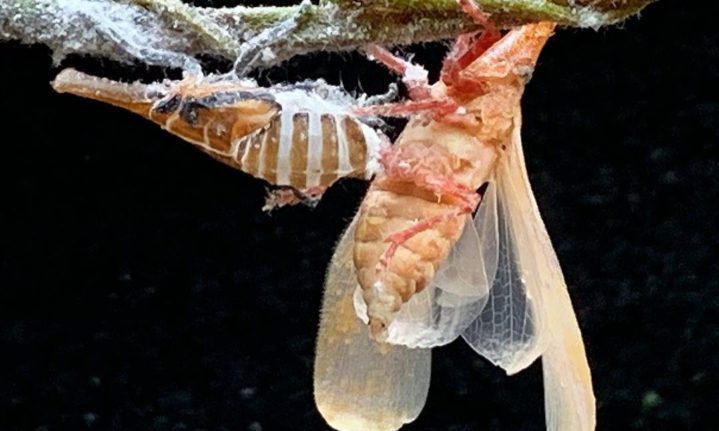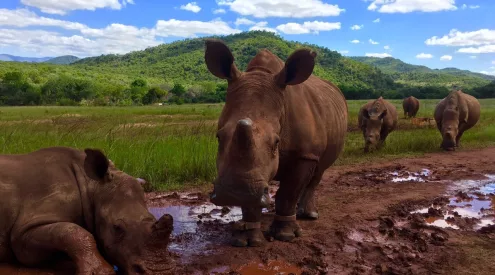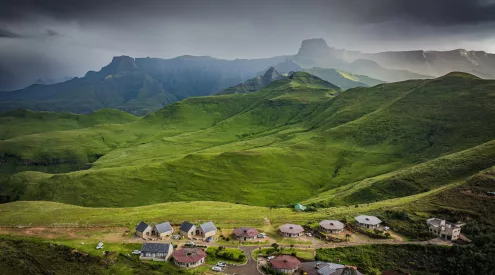Two years ago, the villagers of Ambodifohara on the Masoala Peninsula in northeastern Madagascar knew nothing about sakondry, a small hopping insect, except that it was tasty. Locals would collect it when they came across it, and that was that. A chance forest snack. Fast-forward to late 2020, and the insect is now a staple. ‘We eat sakondry regularly, almost every day during high season,’ says BeNoel Razafindrapaoly, a resident.
This change of status is the outcome of the Sakondry program, which Cortni Borgerson, an anthropologist at Montclair State University in New Jersey, developed in collaboration with the IUCN Save Our Species initiative. The idea was to see whether farming the insect, and therefore increasing its consumption, could halt biodiversity loss and reduce malnutrition.
View this post on Instagram
‘When you ask people why they are hunting [lemurs], the number one reason is: ‘it’s there and it’s easy to catch,’ Borgerson says. ‘If you just tell people not to hunt something, you increase food insecurity.’
To get people to stop hunting lemurs, Borgerson says they needed to find a replacement that fills the same cultural role as lemur meat. ‘Sakondry does just that. Both sakondry and lemurs are wild ‘natural’ foods, which are fatty, clean, cheap, peak in availability during seasons of low food security, and are traditionally eaten and tied to local identity.’
Borgerson says that the idea of farming sakondry (Zanna tenebrosa) came from the villagers themselves. ‘When we asked what meats were available in the diet and what they preferred, one of the foods that came up regularly was sakondry. We just had to figure out a way to increase its availability,’ she says.
The program encouraged villagers in six communities to cultivate sakondry’s host plant, a native bean called tsidimy (Phaseolus lunatus), to attract the insect. The residents of Ambodifohara now cultivate tsidimy on about 2 hectares (5 acres) of land. Each community managed to raise more than 90,000 harvest-size sakondry this year. That added about 450,000 kilocalories and 35,000 grams of protein to their diets, enough to both replace the meat and exceed the nutritional value of hunted lemurs, according to Borgerson.
The program took a steep learning curve: little was known about the insect’s life cycle, so Borgerson and her team first had to learn to distinguish males from females and adults from juveniles, and to spot laying females, all essential for sustainable harvesting. Growing tsidimy has also presented challenges. ‘In the village, chickens eat tsidimy seedlings. Children also play with them and destroy them. In the forest, snails eat the young plants,’ says Razafindrapaoly, Sakondry’s project manager.
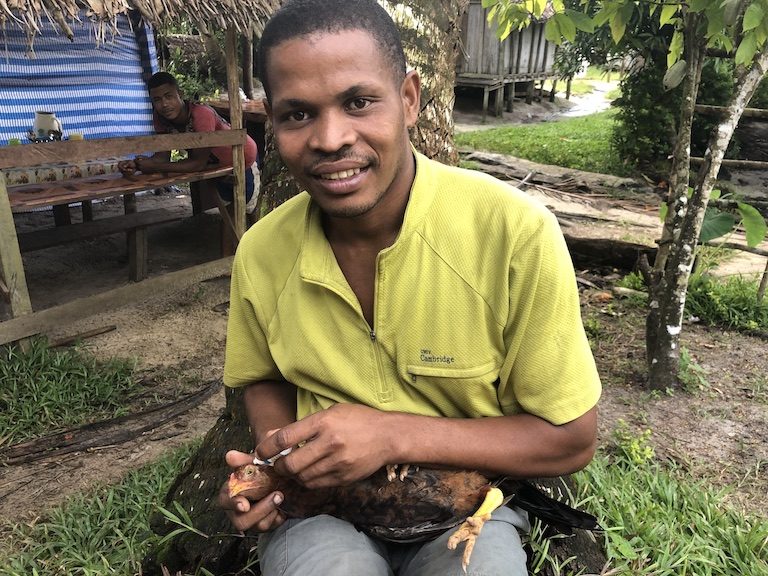
BeNoel Razafindrapaoly, project manager of the Sakondry insect farming project in the village of Ambodifohara in northeastern Madagascar, in 2019. Image by Emilie Filou for Mongabay.
Hiccups aside, cultivating the bean and rearing the insects has been straightforward, which explains why virtually every household in the village has taken part. Importantly, the most active hunters halved their annual hunting totals, saving between 25 and 50 lemurs per community each year, according to Borgerson. They have also become the most enthusiastic sakondryfarmers. ‘With sakondry, we gave people something that was easier than the original activity,’ Borgerson says, referring to hunting.
Jeanne Mathilde Randriamanetsy, another villager, says that ‘people are no longer inclined to hunt wild animals. They’re increasingly concerned about protecting the environment.’ As the gateway to Masoala National Park, Ambodifohara welcomes a few thousand tourists every year, so people are very aware of the economic potential of their forests. Until the pandemic halted tourism, locals had even started selling sakondry kebabs to visitors. They are exploring opportunities to sell the insects in Maroantsetra, the largest town in the region, four hours away by motorized canoe.
Borgerson cautions, however, that ‘it’s not as simple as “eat insects stop eating lemurs” because robust food systems depend on diversity. Sakondry is just one part of creating the sustainable food system that is needed to end lemur hunting.’
View this post on Instagram
Despite its delectable bacon-like flavor when fried, sakondry also tends not to be a straight meat replacement. ‘We eat it like snacks, we don’t eat it with rice,’ says Razafindrapaoly, referring to Madagascar’s ubiquitous staple grain. Randriamanetsyagrees. ‘Sakondry doesn’t quite replace meat. Meat is tastier.’
The popularity of the insect as food is undeniable, however, and three more neighboring communities have already started planting tsidimy too. Thanks to the farming model piloted by the Sakondry program, Borgerson reckons that remote communities could now have an established insect population within three months, a boon anytime, but especially during disrupted food supply chains caused by the COVID-19 pandemic.
She is now planning to roll out the Sakondry program in appropriate locations across Madagascar. ‘It would be ideal for areas with the highest biodiversity combined with the lowest food security,’ she says. She is currently researching how to adapt what is working in the rainforests of the northeast to the kaleidoscope of habitats in Madagascar. There are many Zanna species in the country, so she is trying to identify the best host plants and ecosystems to replicate their farming model. ‘Our hope is that if we can remove some of the barriers such as lack of seed stock or lack of knowledge of production, then it becomes a viable option.’
Borgerson is setting up supply chains to provide the initial tsidimy seed stock for new communities. As for the knowledge gap, she has devised an unusual manual: a deck of playing cards. The Malagasy are enthusiastic card players, and having lived in Madagascar for the best part of 15 years, Borgerson knew that any other paper support would end up being used for alternative purposes, whereas cards would be cherished and shared. The decks, which include everything from how to care for tsidimy seedlings (the No. 9 card) to sakondry’s nutritional composition (the No. 4 card), illustrations of the female (Queen), male (King) and eggs (Ace), will be ready in December this year.
View this post on Instagram
The Sakondry program is not the only initiative in Madagascar looking at the role of insects in conservation. In Antananarivo, Madagascar’s capital, Valala Farms rears crickets and grinds them into a powder for use as a nutritional supplement for vulnerable populations. The farm is about to expand significantly: it has just broken ground on a new 3,000-square-meter (32,000-square-foot) facility, a significant upgrade from its existing 100-square-meter (1,100-square-foot) premises.
One important byproduct of cricket farming is frass, or cricket manure, a powerful fertilizer. Although frass is available commercially in North America as a garden fertilizer, it has never been used in Madagascar before. Valala Farms is therefore running trials to test its efficacy on many types of crops (vegetable, fruit trees, ornamental plants, etc.) as well as in reforestation.
Madagascar has lost as much as 90% of its original forest cover, yet restoration of native forests has a poor track record. ‘Compared to South America, restoration has yet to be demonstrated successfully at scale in Madagascar,’ says Chris Birkinshaw, a researcher at Missouri Botanical Garden (MBG) who is overseeing restoration trials at four locations in Madagascar. ‘In some sites, one of the issues is the critically poor nutrient composition of the soil and when we tried to plant native tree species, they did very badly. Frass is just one of these experiments to see whether it can do better.’
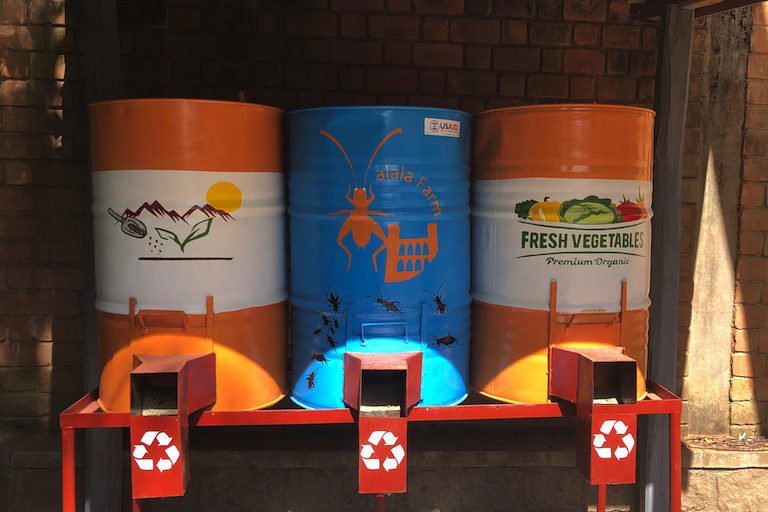
Containers of cricket manure at Valala Farm. Image by Emilie Filou for Mongabay.
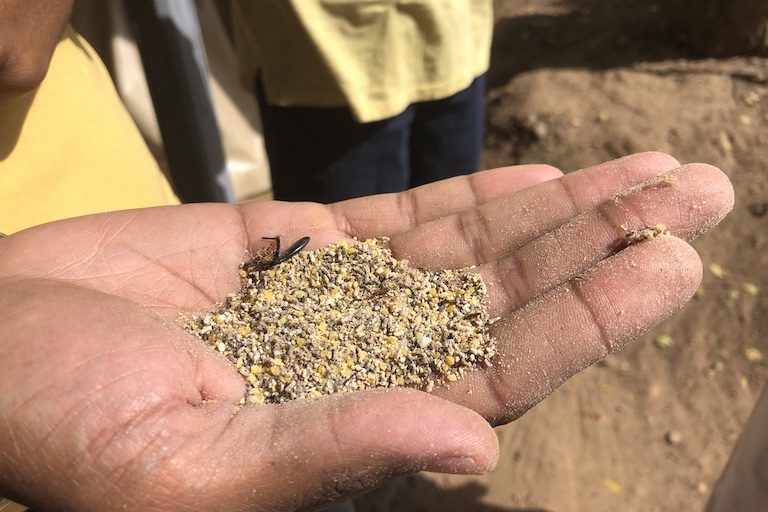
Cricket manure, called frass, from Valala Farms. Frass is a powerful fertilizer. Image by Emilie Filou for Mongabay.
Early results are encouraging: six native tree species planted on plots with frass grew between two and eight times as well as the same species with no frass, and the results were best on the plots with the least added frass. ‘This begs the question of how low we could go. Frass is a bulky item, hence why we’re particularly interested in how it could be used in low concentrations,’ Birkinshaw says. The trial has only been running for six months, however, and Birkinshaw says the 12-month results will give a more comprehensive picture.
Back in the food department, farmed insects could help solve the same protein problem that the semi-wild sakondry addressed. Pound for pound, insects require less land, water and feed than other meats. They also produce fewer greenhouse gases. In a country where protein is in short supply, this makes insect farming an attractive, sustainable option. Brian Fisher, an entomologist at the California Academy of Sciences and one of Valala Farms’ founders, says the farm has been contacted by a number of conservation organizations in Madagascar interested in setting up cricket farms in their areas of operation to help curb consumption of bushmeat like lemurs and turtles and to stem deforestation for agricultural land.
Fisher, who’s collaborated with Borgerson, is keen, but says he wants to do things right. First, native insect species would have to be found for each region to ensure farming is sustainable. Valala Farms’ highland cricket could not withstand the harsh heat of the south without air-conditioning, which would make farming prohibitively expensive. Second, Antananarivo’s crickets feed on corn. This was necessary to standardize production, but it’s not sustainable. Fisher says there needs to be a feed source for the insects that is free and does not compete with human food supplies. That is: waste, most likely agricultural.
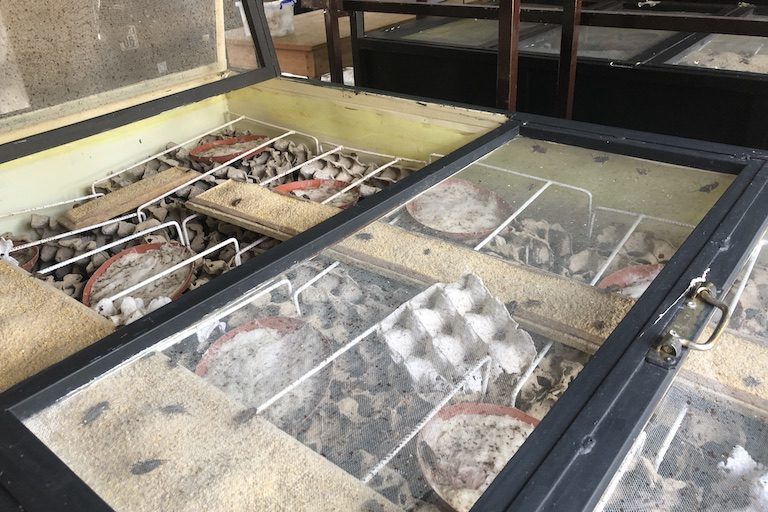
A cricket cage in Valala Farms in 2019. The Antananarivo-based group produces cricket powder as a “green” source of protein and nutrients. Image by Emilie Filou for Mongabay.
‘We should approach things differently,’ Fisher says. ‘You go into an area, figure out what waste is available and then you choose the insect that will thrive on that. Sometimes it will be a beetle, sometimes a fly larvae, sometimes a cricket, and then you tailor how you use the insect: if it’s a fly larvae you use it for animal feed [chickens, pigs, aquaculture], if it’s a beetle or a cricket, you use it for food.’
Fisher acknowledges that this approach will take much longer— it might take two years to find a suitable solution for each region of Madagascar — but he is sanguine about the approach. ‘There are so many exciting potential sources of waste that we know something will work.’
Additional reporting by Rivonala Razafison.
Source: Mongabay/Emilie Filou
Picture: Instagram










